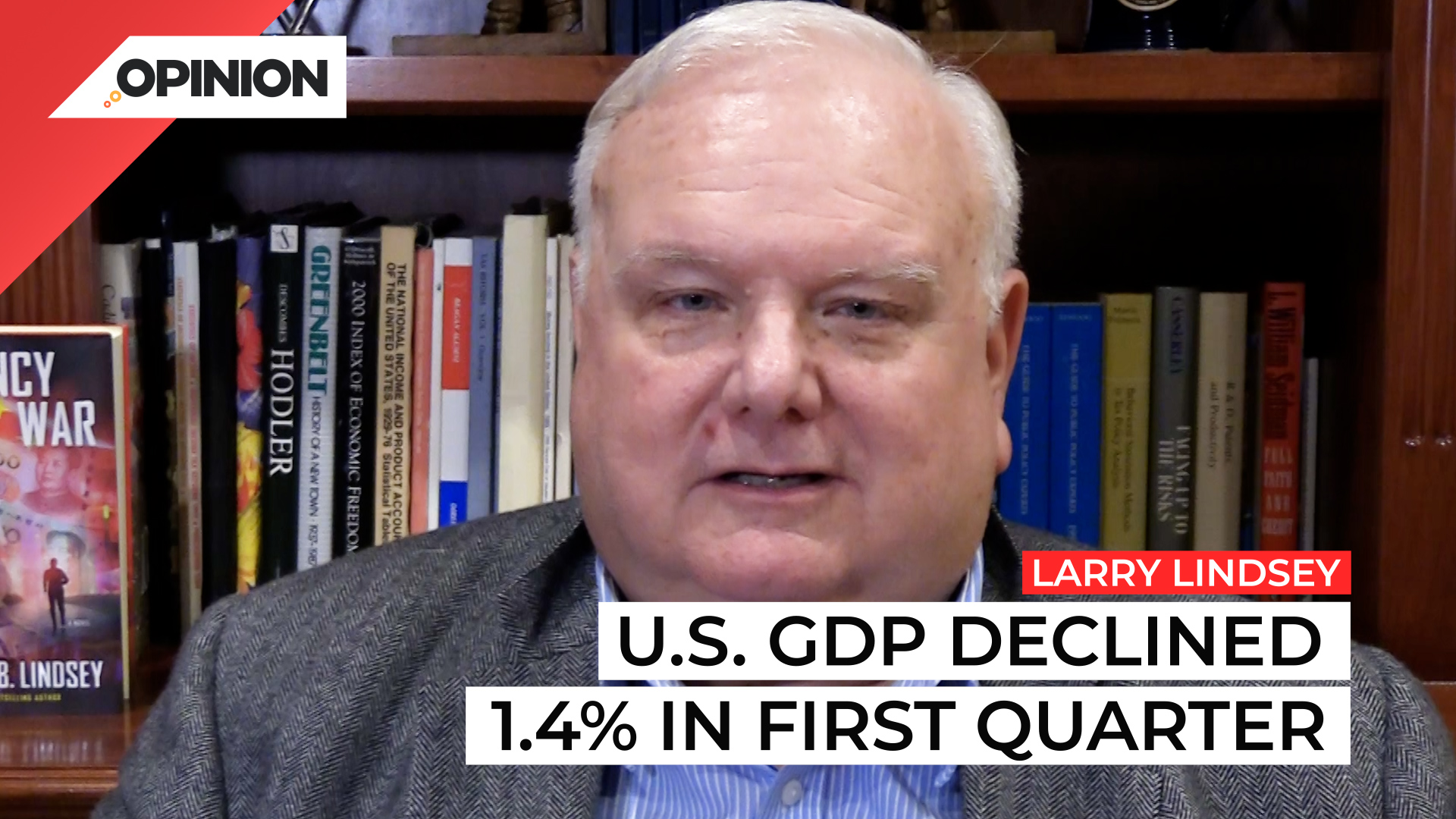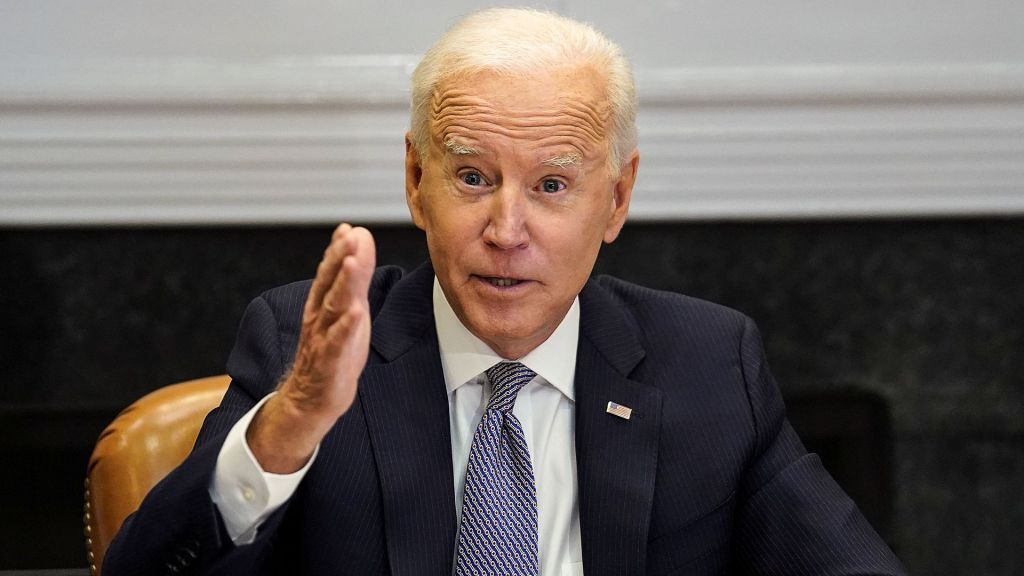
Commentary
-
Our commentary partners will help you reach your own conclusions on complex topics.
Recently, it was reported that real GDP in America declined 1.4% in the first quarter. Well, the natural question is what does that mean? It basically comes down to less goods and services, less economic activity happened in the first quarter of this year, compared to the fourth quarter of last year.
It’s not the end of the world. These sort of things happen. But when you look closely at the data, you begin to understand why it happened. And the main problem is inflation is running very, very hot. What they call the GDP deflator, which is the price of the entire market basket of everything that’s produced, rose 8% in the first quarter, compared to 7.1% in the fourth quarter of last year, and much, much lower rates around 2% as recently as 2020. Well, when the price of things goes up and there’s only so much ability for people to spend that need necessarily creates a problem for the amount of real goods and services that can be sold. Hence the problem.
This one is often described as having unusual factors being the cause. Well, yes and no. One of the quote, unusual factors really isn’t unusual at all at the time of inflation and that’s a very, very tight labor market. Well, when you have a tight labor market, it means you can’t produce things here. And if you can’t produce things here, you’ve gotta produce things abroad. And that means higher imports.
So, imports don’t help our GDP. They help the other country’s GDP. Import prices in the first quarter of this year, rose at an annual rate of 13.9%. 13.9% is enormous. And that meant that the volume of imports, actually declined by …excuse me, went up by 270 billion. We really needed the goods. We had to pay a lot more for them. And that 270 billion really was a subtraction from our GDP. There were other problems, again, all inflation related.
One was construction activity, both houses and offices and factories and cost of building went up at an annual rate of 17.7%. Unbelievable. So pressure on home prices is gonna continue to rise. Home, uh, prices are then going to be compounded by rising mortgage rates, which are now basically charging 5% or more, excuse me, compared to 3% very recently.
This is going to result in a plunge in housing affordability. And it’s going to mean again, another drag on the economy going forward. Will all this add up to a recession? We’ll have to see.
The national bureau of economic research has a committee that actually determines when something is a recession. It usually takes about six or eight months after the numbers come in for them to reach that decision. And there are four criteria that they use. One is the unemployment rate. Right now, that is 3.6%. It’s gonna be tough to get that much lower. It’s more likely to rise than to fall. And that’s a warning sign. Industrial production in the first quarter was up. That’s a positive for no recession. Real final business sales declined by six tenths of a percent. And the final indicator, real personal income, excluding transfers, also declined. So right now we are at two indicators of the four pointing to recession, one uncertaiN, and the other one good, but may not go any better. So watch out ahead.
The chances that the first quarter was a harbinger of the start of a slow period of growth is obvious. Whether it was the start of a recession remains to be seen. My bet is it probably will end up that way – mild, short, but a recession nonetheless.
-
President Biden just isn’t cool
For some Americans, politics is only about policy, while others prioritize core values, ideas, aspirations or beliefs. Still, for others, politics may be a reflection of culture, where voting serves as a symbolic act to proclaim cultural group identity. But for some Americans, who they vote for and support is more of a popularity contest,…
-
Federal Reserve policy should be more restrictive
The American economy is booming, with high GDP growth, record-low unemployment, and wage gains for median workers. Over the past few quarters, U.S. economic growth indicators have consistently outperformed official projections. But the U.S. Federal Reserve recently conceded that its policies might be too restrictive, hindering the full potential of the U.S. economy, which the…
-
Celebrate tight labor market, but don’t cut interest rates
While President Joe Biden has been celebrating U.S. economic success, many Americans are still unhappy about the economy. So who’s right? The most recent jobs report for February showed that while the unemployment rate rose slightly to 3.9%, job gains were higher than expected, with the total coming in at 275,000 versus the expected increase…
-
Social and economic class will define 2024 election
Following in the footsteps of FDR, Democratic support in the past hundred years has drawn largely from working-class individuals, labor unions, and civil society organizations. Republican support, conversely, tended to rely upon larger corporate donations and the support of high-income individuals. In 2024, these traditional roles are evolving, and the new reality of campaign finance…
-
Black swan events make next US president difficult to predict
In November, Americans will cast their votes to elect a new president and Congress. Despite significant indicators suggesting dissatisfaction with the economy, posing a challenge for President Biden’s potential reelection, predicting the winner remains challenging due to all the variables at play. Straight Arrow News contributor Larry Lindsey utilizes a recent Gallup poll to offer…
Latest Opinions
-
 AP Images
AP Images
Argentina asks to join NATO as Milei looks to enhance security, strengthen ties
-
 Getty Images
Getty Images
Utah students protest 'furries,' school admin deny problem
-
 Reuters/Jane Rosenberg
Reuters/Jane Rosenberg
Trump’s ‘hush money’ trial: Legal experts debate name coined by media.
-
 AP Images
AP Images
Black Chicagoans feel neglected as millions funneled to migrant crisis
-
 Envato
Envato
Congress wants to curtail ‘judge shopping.’ Can it act before the election?
Popular Opinions
-
In addition to the facts, we believe it’s vital to hear perspectives from all sides of the political spectrum.


